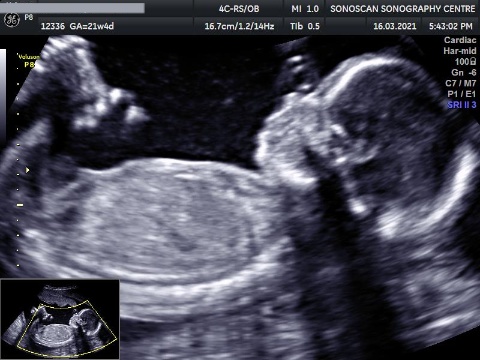
First Trimester Screening
( 10 to 14 Weeks )
- Double Marker Test 11 to 14 Weeks
A screening test identifies people at risk for a disorder in unselected population
Why Screen for Down's
-Commonest aneuploidy
- Morbidity High
-0.6-4.1 per 1000 between age
-70% occurs in women <35 years
Incidence of Aneuploidy
Trisomy 21-1 in 800
Trisomy 18-1 in 10000
Trisomy 13->1 in 10000
Types of screening
1. Combined screening
2. Sequential screening
3. Contingent screening
4. Integrated screening
Which is Good Screening test
Those test dives detection Rate 75% and above, FPR 5%
| Screening Method | Detection of T21 FPR 5% |
|---|---|
| Double Test | 30 |
| Triple Test | 60-65 |
| Quadruple Test | 65-70 |
| 1st Trimester NT | 70-75 |
| 1st Trimester Pappa-A,Free B HCG | 60-65 |
| NT,PAPP-A, Free beta HCG | 80-85 |
| Integrated | 85-90 |
1. Combined Screening
- USG + Biochemistry
2. Sequential Screening
- Risk assessment in two stages
- All have combined screening & give results
- Only screen negative group separated & offer a quadruple screening
- First trimester risk used when calculating final risk
3. Contingent Screening
All have combined screening, then 3 options
- High Risk-Invasive Diagnosis
- Moderate Risk Quadruple Screening
Low Risk-No further screening
High Risk - 1 in 50 -CVS
Low Risk - 1 in 1000 no further test
Internediate Risk - 1 in 50-1000
Offer Quadruple screening
4. Integrated Screening ( Best screening model )
- Screening happens in two stages
- Single risk assessment after 15 weeks
- After 1st Trimester screening, no result is given to patient
- Patient is asked to come again for 2nd Trimester screening
DR-96.96% FPR-3%
BIOCHEMICAL SCREENING IN TWINS
ONLY 1st TRIMESTER BIOCHEMICAL SCREENING, NO 2nd TRIMESTER SCREENING
A. Monochorionic Twins
- Identical Risk for each fetus
B. Dichorionic Twins
- Separate risk for each fetus
C. For triplets and higher multiples
- Risk based on USG markers alone
D. Vanishing Twin
- No Fetal pole-Singleton


Second Trimestr Screening
( 15 TO 21 Weeks )
-Quadruple Marker Test
FAQ & Answers
ATTENTION!!!!
SONOSCAN SONOGRAPHY CENTRE
SHIFTING SOON TO A NEW, BIGGER & ATTRACTIVE PLACE
New Adress-
1st floor, Neel Solitaire Building, Chhatrapati Shivaji Maharaj Chowk, Old Panvel- Navi Mumbai
9820349315 /9321349315